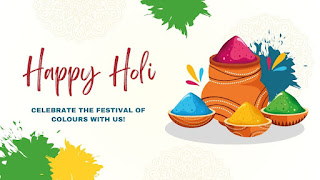Holi, often referred to as the Festival of Colors, is one of the most vibrant and joyous festivals celebrated in India and many parts of the world. This festival marks the arrival of spring, the victory of good over evil, and a time for social harmony.
Historical and Mythological Significance
Holi has deep-rooted historical and mythological significance. Here are some key stories associated with Holi:
The Legend of Prahlad and Holika: One of the most popular legends is that of Prahlad and Holika. Prahlad was a devoted follower of Lord Vishnu, much to the displeasure of his father, the demon king Hiranyakashipu. In a bid to kill Prahlad, Hiranyakashipu's sister, Holika, who was immune to fire, sat with Prahlad in a bonfire. However, due to her evil intentions, Holika burned to ashes while Prahlad emerged unscathed. This legend symbolizes the triumph of good over evil and is commemorated with the lighting of bonfires on Holika Dahan, the eve of Holi.
Radha and Krishna: The playful frolics of Lord Krishna with his beloved Radha and the gopis (milkmaids) are also integral to Holi celebrations. Krishna, who was known for his dark complexion, playfully smeared colors on Radha and other gopis. This act of smearing colors became a cherished tradition, symbolizing love and equality beyond social barriers.
Holi Celebrations and Traditions
Holi is a two-day festival that combines religious rituals with playful celebration.
Holika Dahan: The festivities begin with Holika Dahan, also known as Choti Holi. People gather to light bonfires, symbolizing the burning away of evil and negative energies. The bonfire is a reminder of Holika's demise and the victory of good over evil.
Rangwali Holi: The next day is Rangwali Holi, or Dhulandi, the day of colors. People of all ages come together to smear each other with vibrant colors, often using natural powders called gulal. Water balloons, water guns, and buckets of colored water add to the fun. It's a day of carefree enjoyment, laughter, and unity, transcending social distinctions.
Traditional Foods and Drinks: No festival is complete without special foods, and Holi is no exception. Traditional sweets like gujiya, a stuffed pastry, and snacks like dahi bhalla and papri chaat are enjoyed. Thandai, a refreshing drink made with milk, nuts, and spices, is often consumed, sometimes laced with bhang (cannabis) for a little extra festive spirit.
Music and Dance: Holi is also marked by vibrant music and dance. Folk songs and Bollywood hits related to Holi play in the background as people dance and celebrate. Traditional instruments like dhols and drums add rhythm to the festivities.
Modern-Day Holi
In recent years, Holi has transcended boundaries and is celebrated worldwide. Various cultural organizations and Indian communities abroad host Holi events, spreading the joy and spirit of the festival. Eco-friendly Holi, with natural colors and minimal water usage, is gaining popularity as people become more environmentally conscious.
Conclusion
Holi is a celebration of life, color, and love. It brings people together, breaks down social barriers, and fosters a sense of community. The festival's joyous spirit and vibrant traditions remind us of the importance of love, unity, and the triumph of good over evil. As we celebrate Holi, let us embrace these values and spread the colors of joy and happiness far and wide.
